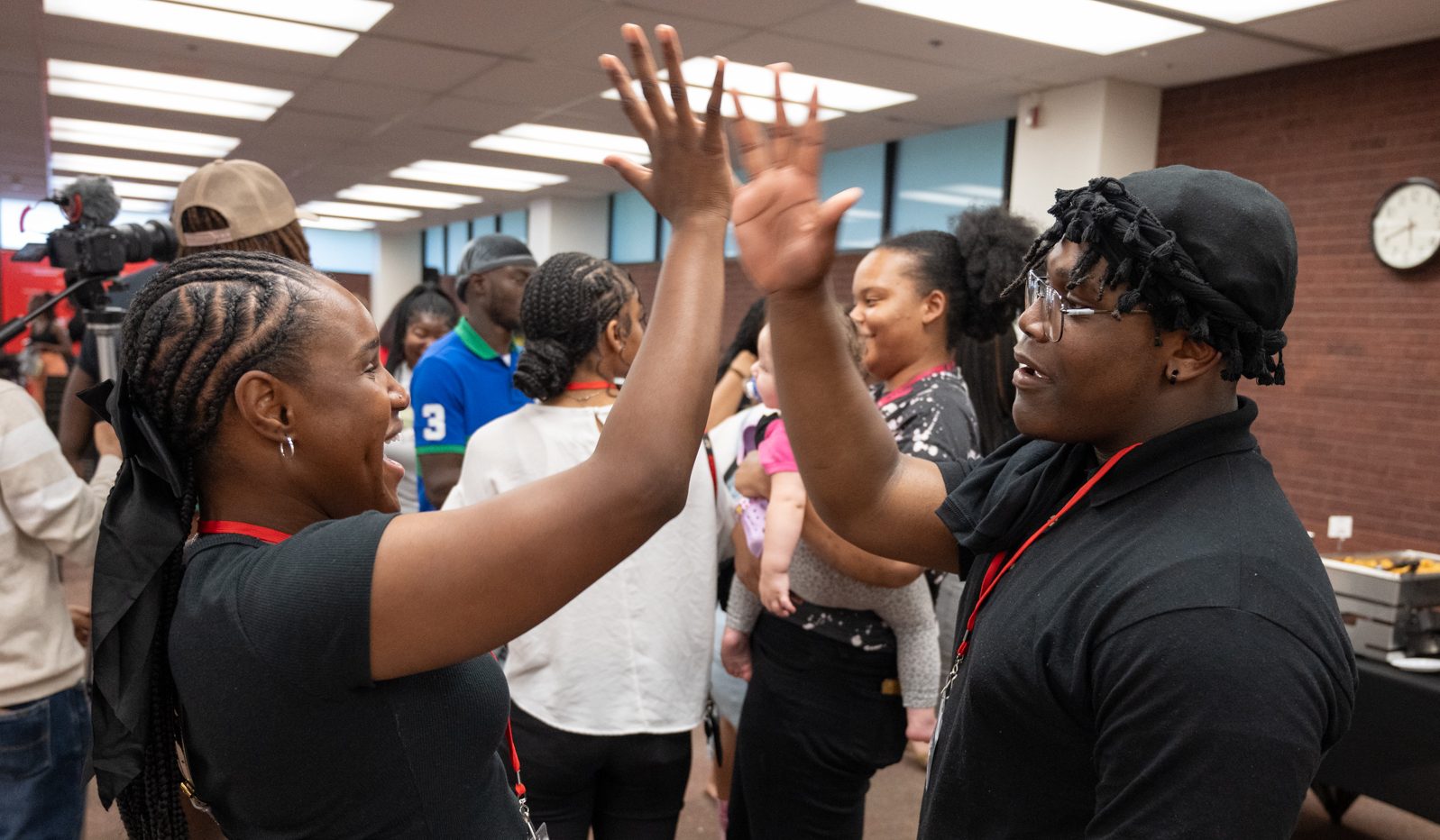CODES classes are student-centered spaces! They are designed to encourage inquisitive thought, academic risk taking, and lifelong learning. In order to make visiting community partners a reality, the classes are also usually scheduled in a three-hour block. The typical research team course should include students working on projects collaboratively, discussing or working through an issue in smaller groupings, and mapping their problem on the board.
We are talking about freshman here, so faculty need to be creative to keep students engaged, help them dig into the work of learning, and sometimes get them moving too! Here are a few proven strategies you might try in class.
These activities can also engage students while you take the time to check in with specific students and share feedback on their work.
Think-Pair-Share
This is a good activity to start the day to get every student engaged and talking
Think: Have each student write down a quick answer to an open-ended question or an analysis of a reading.
Pair: Have the students pair up and take turns listening to one another’s answers. They should then discuss and come up with one synthesized answer.
Share: Have each pair share their answer with the group.
The Muddiest Point
This is an activity to use either at the beginning of class, to figure out how to begin a discussion or at the end of class to assess what issues still remain unclear to students. You ask students to write down the “muddiest point.” You collect them all and can use them to guide a continuing discussion. See also this brief description from University of Florida.
Drawing or Diagramming
When talking about a complicated problem, trying to understand how something works, or even when trying to get to the heart of a theoretical issue, drawing a map, plan, or process is a useful activity. Have students draw on their own, explain their design to a teammate, and then synthesize.
Teach Someone Else
Especially as you move beyond the first few weeks, you might assign students the responsibility of leading discussion on a reading. They can come up with questions or activities to engage the class in conversation.
Reflection
Reflection is a critical piece of helping students take control over their learning. Leave space in class for students to free write about techniques they used to read or study, risks they took with a project, or what makes a particular assignment difficult for them. Give them the chance to share their thoughts with you and with their teammates.

